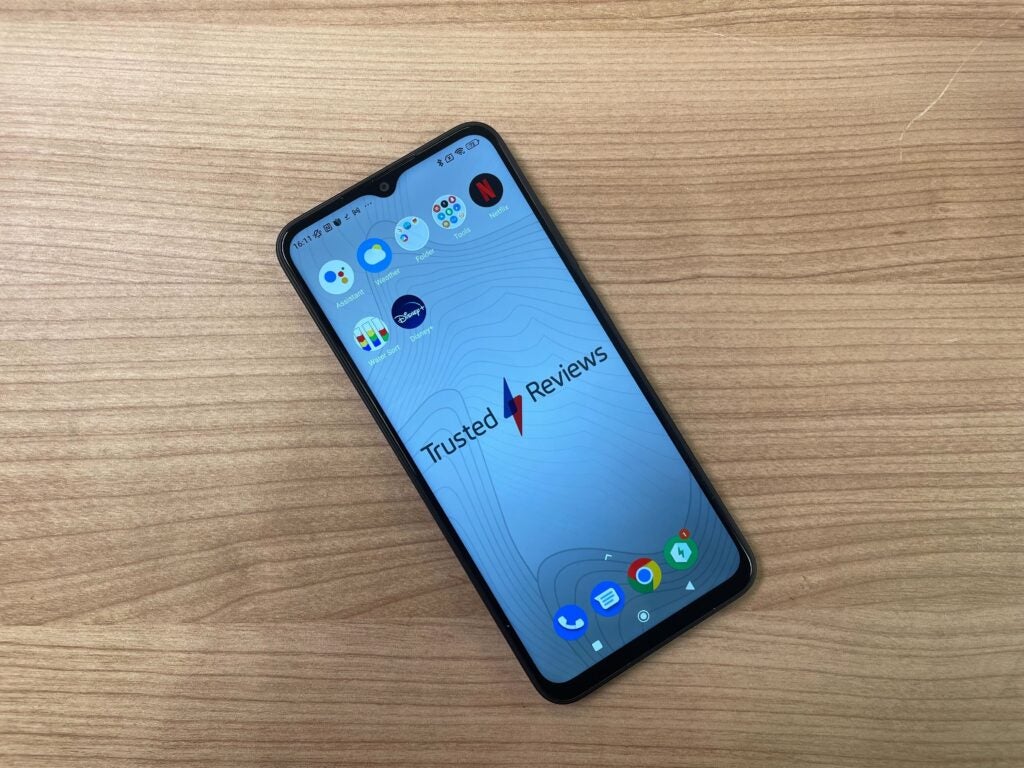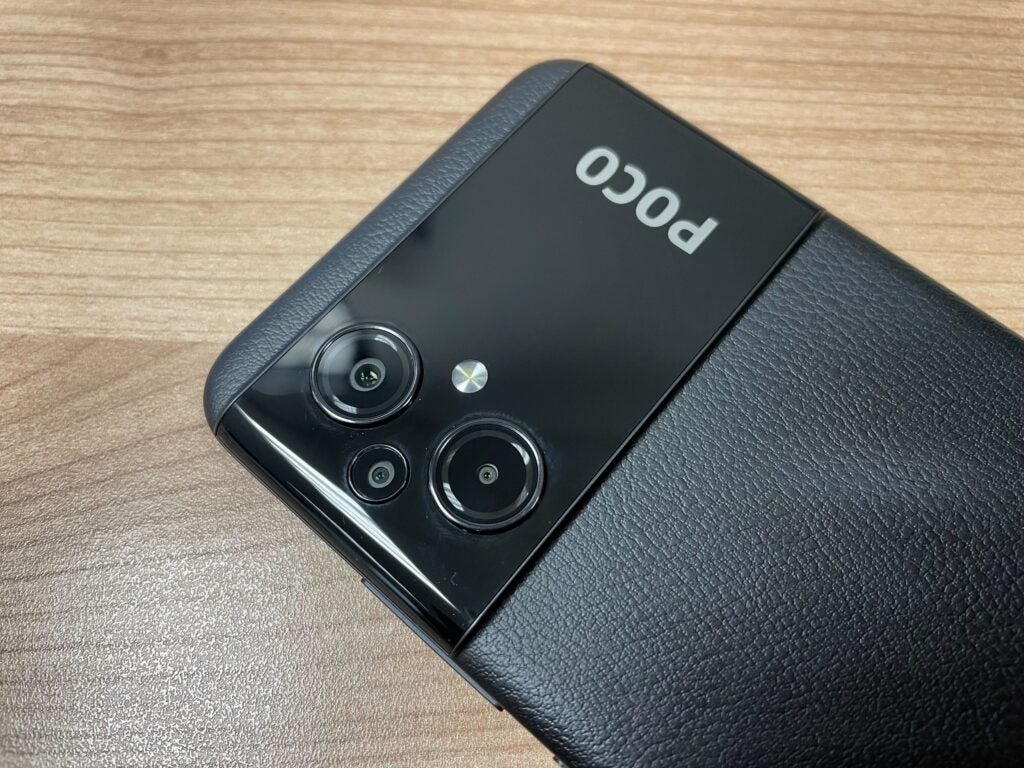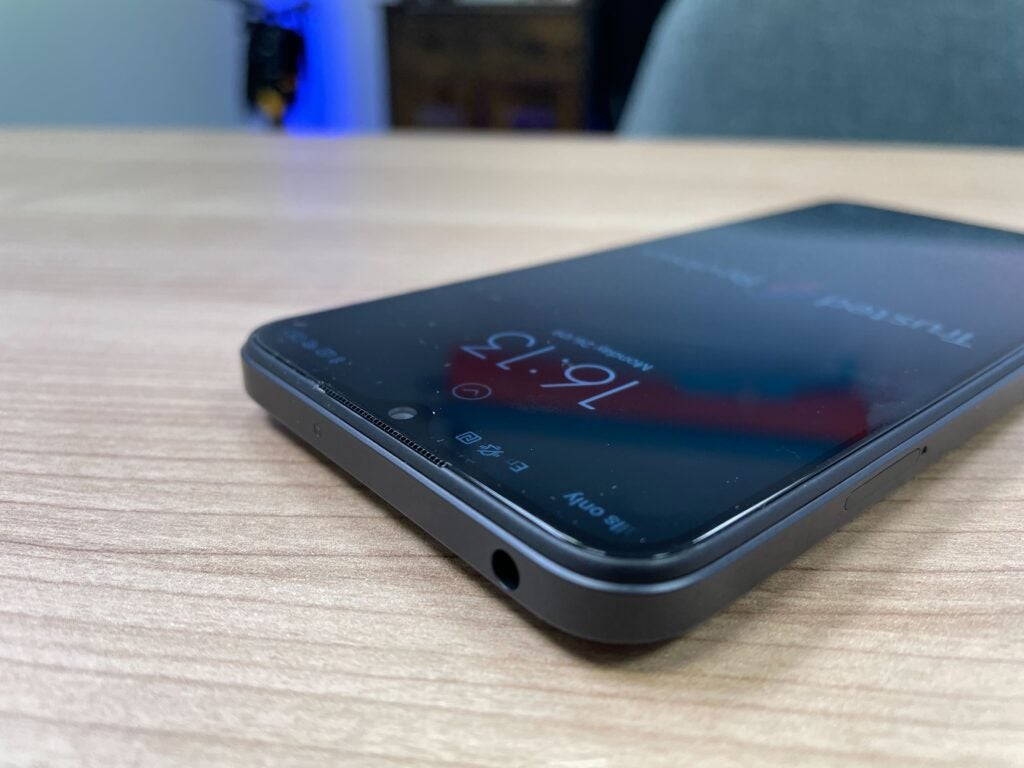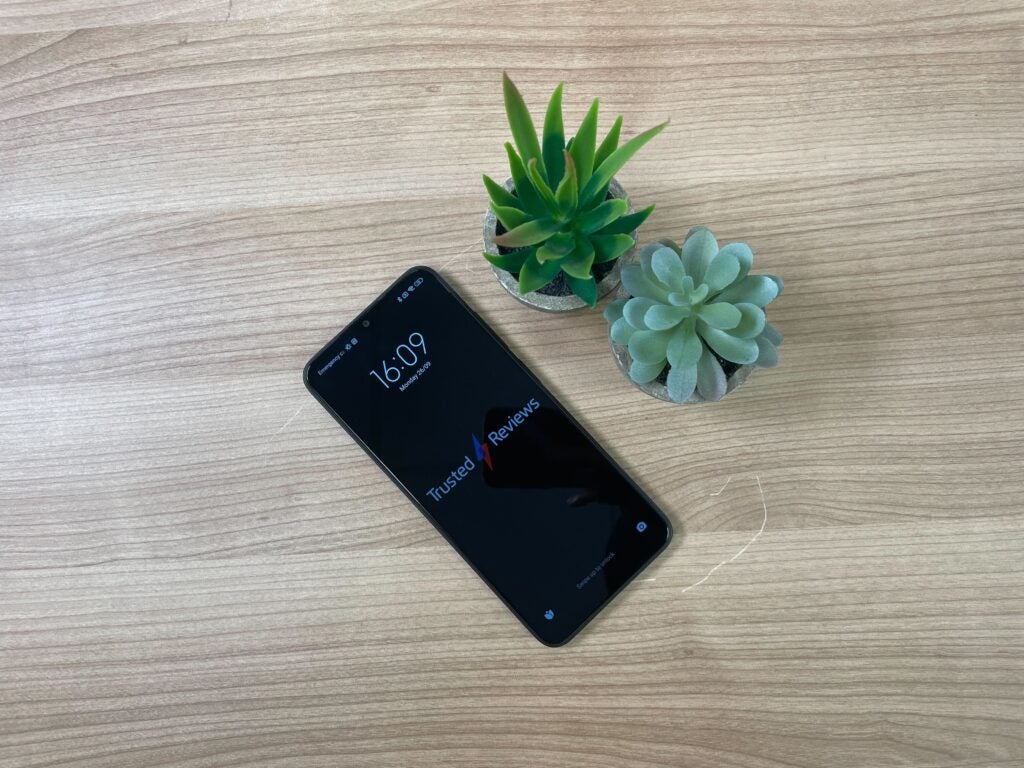The Poco M5 is an affordable phone that comes with more than enough power for browsing and streaming. The low price point does mean that it’s limited in terms of gaming, and it doesn’t have the best camera on the market, but it’s more than serviceable if you’re looking for a good-value handset.
Pros
- Great battery
- Speedy charging
- Large display
- Mature design
Cons
- Front camera isn’t the best
- UI feels very bloated
-
50MP main cameraThe leading camera has a 50-megapixel resolution. -
6.58-inch FHD+ displayThe Poco M5 comes with an adjustable refresh rate, topping out at 90Hz. -
Fast chargingThe device is supported by 18W wired fast-charging.
Introduction
Xiaomi’s sub-brand Poco launched its M-Series of phones back in 2020, with the Poco M5 coming in as the latest mid-range device, alongside its older brother, the Poco M5s.
The Poco M5 is a solid affordable handset that is brimming with features; a Full HD+ 90Hz refresh rate, a 5000mAh battery and 18W fast-charging, alongside a 50MP main camera, all for under £200.
I enjoyed my time using the Poco M5, especially since I have never used an Android handset before. Here is how I got on.
Design and screen
- Corning Gorilla Glass 3 screen
- Flat-screen
- Leather-effect plastic design
The Poco M5 comes in three colours: Yellow, Green and Black. My unit came in Black and I thought it had a mature design, featuring a leather-like back and a camera bar that spans the rear of the phone. This gives the phone a more premium look, despite its affordable price.
Since the back is textured like leather, I never had any issues with fingerprints or smudging, and it made the phone feel a little durable to the touch, as opposed to standard smooth, cheap-feeling plastic. It’s also much lighter than some of my previous Apple phones, which made it easier to hold and use with just one hand.

In terms of ports, it features a USB-C charging connector and a 3.5mm audio jack, the latter of which may be a rarity on most premium phones nowadays but is more likely to be found on this end of the price spectrum.
The power button also doubles as a fingerprint sensor, which I found was far more reliable than using the device’s face unlock option. I was also able to customise the power button to turn on certain features, like the Camera or Google Assistant, which I really liked as it made navigating the device feel more fluid.
On the front of the device, there is a 6.58-inch Full HD+ flat-screened display with a resolution of 2408x1080p. Like many other Android phones, it features a punch-hole camera, which I do massively prefer to the large, wide notch that’s present on Apple handsets such as the iPhone 14. What’s more, it’s made of Gorilla Glass 3 which offers some protection against bumps and scratches, though there is no official IP rating for this handset.

I thought that the screen was pretty sharp, with colours coming off as bright and vibrant. After testing the screen, I found that it had a nit count of 388.91 which is within range of what I would expect for an average handset, though I will say that I sometimes struggled to read the screen during bright days, and it paled in comparison to the iPhone 12 Mini (which has a nit count of around 625).
There is also no HDR support, so you won’t be able to get the most dazzling results when you’re streaming Netflix for example. However, I still enjoyed watching video content with the Poco M5, and thanks to the large screen size it doesn’t feel too cluttered – though I would look towards a higher-end device if screen performance is a top priority for you.
Camera
- 50-megapixel main sensor
- Triple-camera setup
- The front camera can be grainy
The Poco M5 comes with a triple camera setup, including a 50-megapixel main camera (f/1.8), a 2-megapixel macro camera (f/2.4), and a 2-megapixel depth camera (f/2.4).
Some of the features include a night mode; AI-powered portrait mode, which is designed to create bokeh and depth in the background; and Pro mode, which takes full advantage of the 50-megapixel camera.
For the price, I was impressed with the camera. The colours seemed vibrant and it could pick up a lot of detail especially when I turned on HDR. As you can see from the picture below, the reds and yellows pop, with a lot of detail being captured on the brickwork

Photos taken in clear daylight also fared well, and I felt like the M5 was able to capture and lot more depth and nuance than I would have expected. However in some instances, photos could look a little washed out and lack some contrast, making it look like some objects were almost blended together.


Photos in low light were also decent, and I thought that the dedicated night mode was able to capture some light and detail in pictures, though I think this isn’t the strongest feature of this camera.
The macro mode was a bit of a disappointment, and I found that I couldn’t really get as close to objects as I would have liked. It also rarely cooperated unless I was in very clear and bright situations, and I ended up not using it due to the inconvenience.

Turning the phone around, I thought that the 5-megapixel front camera was serviceable and took some decent selfies, but it lacked the same level of detail as the rear setup. Portrait mode was probably my least favourite aspect of the camera overall, with pictures coming out unnaturally smooth and washed out.
In terms of video, the front and rear cameras can record 1920x1080p and 1280x720p at 30fps. There is a macro video mode and movie frame mode, with no option for slo-mo or time-lapses.
Performance
- Runs on MediaTek Helio G99
- Comes with 6GB RAM and 128GB storage by default
- Preinstalled with Android 12
The Poco M5 uses a MediaTek Helio G99, which couples an octa-core CPU with an ARM Mali-G57 MC2 GPU. This silicon gives the phone enough of a performance boost to run smoothly, although naturally it’s nowhere near the same standard as high-end handsets from the likes of Apple.
This phone comes with 4GB and 6GB RAM, with options for 64GB and 128GB storage, although it does support expandable storage up to 1TB. In the same vein as the Poco M5s, it does not come with any support for 5G, but 4G instead.
During day-to-day use, I found that it was perfectly serviceable. I didn’t experience any issues while scrolling through apps or browsing the web, and it had enough power to let me engage in some light gaming, although I did find that intensive games like PUBG took a toll on the device and didn’t feel as fluid.

To back up my anecdotal experience I also ran some benchmark tests using Geekbench 5. The single-core score came out at 547, while the multi-core performance came out at 1920. This edged out the Poco M5s – which scored 1847 in the multi-core test – despite its slightly higher price tag, although it does put it below other Poco handsets, like the mid-range Poco F4, which scored 3178.
This handset uses Android 12 but the interface is controlled by Xiaomi’s own MIUI 13. Some of the interface feels smooth, like the drop-down menu and customisation options within the power button, but it did feel insanely bloated upon first use due to the litany of pre-installed apps onboard. There are multiple downloaded games, seemingly every cryptocurrency app ever made, and random ‘virus scanners’ that do hinder the experience.

After some time cleaning up my home screen and curating my own folders it felt less cluttered, although it seems like Xiaomi didn’t put any real thought into the design of the interface.
I will say as someone that has very little experience with Android devices, I was able to get used to MIUI after a few days. I can’t say that it feels as good as iOS, and I imagine those who prefer classic variations of Android, like those found on devices like the Pixel 6 Pro, will also need some time to figure out Xiaomi’s software.
For browsing, light gaming and watching video content I thought that this phone worked very well, but I wouldn’t recommend it to anyone who’s looking for a lot of performance power.
Battery Life
- 5000mAh battery
- Supports 18W fast charging
- Fast charger included in the box
The Poco M5 packs a 5000mAh battery and supports fast charging at 18W, with the charger included in the box.
From my experience, this phone has an impressive battery life. I could use it for a few hours a day without needing to recharge it every night, and even on heavy-use days it took a while for the battery to drop.
I found that watching one hour of video content on Netflix drained the battery by 12% while streaming music content for an hour only cost me 6%. While individual use cases will affect the device differently, the Poco does have great battery life, outlasting my iPhone 12 Mini on most days.

However, the battery falls a little short when it comes to recharging. While fast charging is a plus, 18W is nowhere near the fastest offered on the market. Charging the device from 0% to 50% took 54 minutes, with 0% to 100% taking 124 minutes.
This isn’t a dealbreaker, but it’s definitely something to keep in mind, as you won’t be able to quickly charge up your device before a long-haul journey.
Should you buy it?
You want a cheap phone to browse and watch video content: The Poco M5 packs a large screen that’s ideal for both browsing and streaming video content. Plus, the reliable battery means that it will last you through the day without issues.
You want more performance power: While the Poco M5 is great for casual gaming and browsing, it’s not capable of intensive gaming and does not pack the most powerful camera.
Final Thoughts
Overall, I think the Poco M5 is a great phone for the price, and something to consider if you’re after a handset that will get you through the day without costing a fortune.
The design is minimal and mature, and while the screen isn’t the brightest around, it does work well for watching video content and it’s large enough that it doesn’t feel too cluttered to use.
My least favourite part of this device is the user interface, although after tinkering with it and getting used to it I thought it worked fluidly, and it’s a lot more customisable than any Apple phone.
While the camera won’t be winning any awards, it is perfectly serviceable and picked up on a lot more detail than I would have expected. For the price, this is not something to be written off, and if you’re not bothered about gaming or seeing the highest specs then this is a smartphone I would easily recommend.
FAQs
No, there is no HDR support on the Poco M5, although users can take pictures in HDR.
It uses a MediaTek Helio G99 processor, with an Octa-Core CPU and an Arm Mali-G57 GPU.
Yes, this handset has a triple camera setup, with the main camera using a 50MP sensor and the remaining two lenses being a macro camera and a depth sensor.
Sustainability
TrustedReviews’ holds the fact that global warming is not a myth as a core value and will continuously endeavor to help protect our planet from harm in its business practices.
As part of this mission, whenever we review a product we send the company a series of questions to help us gauge and make transparent the impact the device has on the environment.
We currently haven’t received answers to the questions on this product, but will update this page the moment we do. You can see a detailed breakdown of the questions we ask and why in our sustainability info page.
Jargon buster
5G
Offering faster download and upload speeds when compared to 4G. Great for game streaming and HDR video playback. Not supported everywhere yet and speeds vary wildly.
IP rating
An abbreviation for ‘Ingress Protection Code’, which lets you know to what extent a device might be waterproof or dustproof.
















